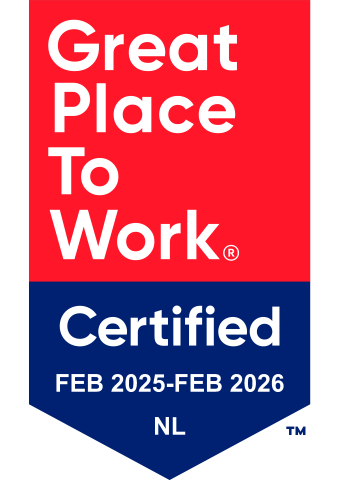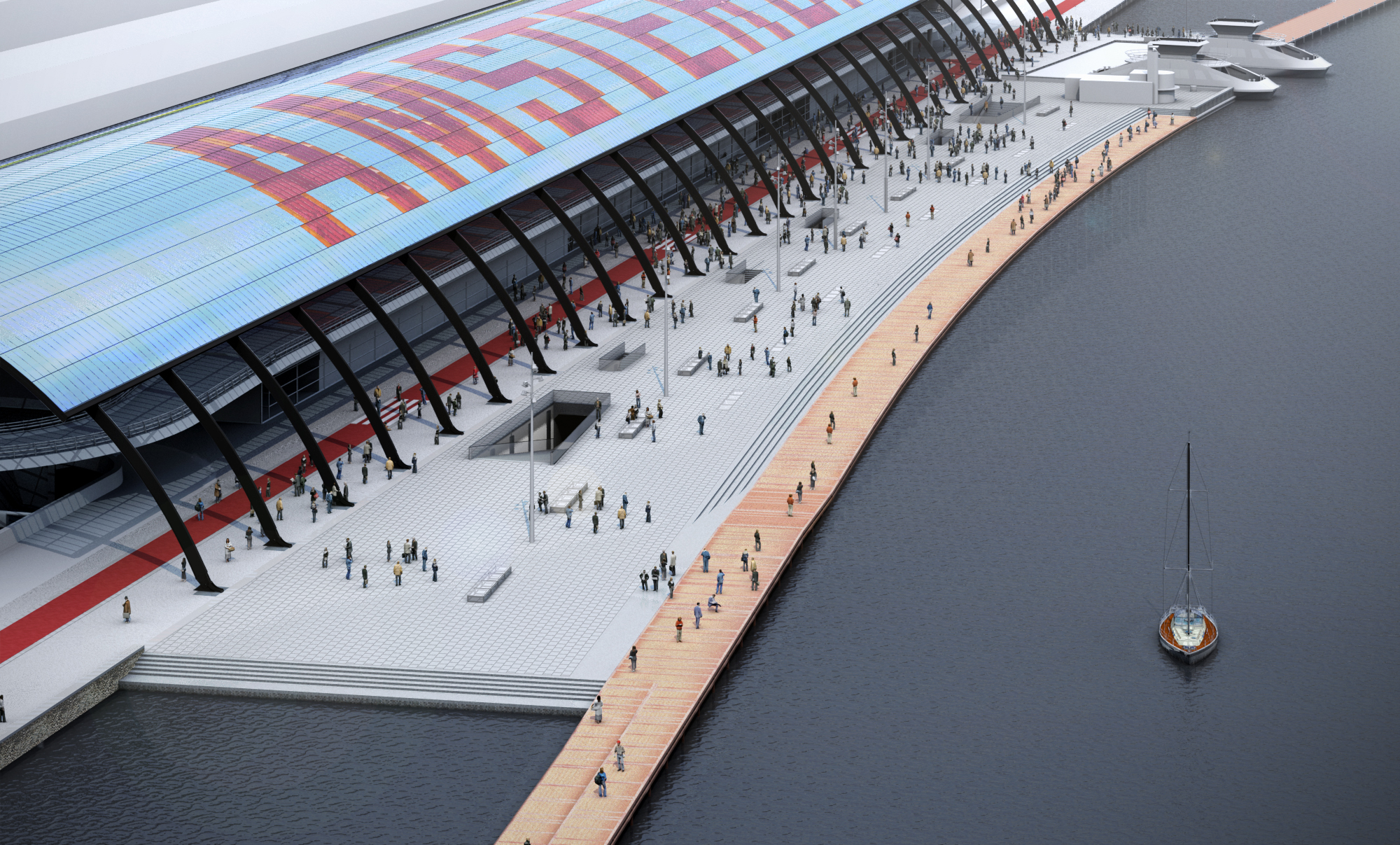Last year, Nathan Meijer (29) joined consultancy Flux Partners as Junior Consultant Tendermanagement. Flux Partners offers performance-oriented support in projects and tenders. His first tender was the project IJboulevard. A tender is a method for awarding large contracts and projects. He wrote the Risk Management Plan together with Roeland Boonekamp, one of the partners of Flux Partners. Together they achieved the maximum score of ‘excellent’. Typically, three to five tenderers hand in their bid and are awarded points based on price and quality, followed by a scoring average between the price-quality ratio. The highest scoring tenderer is granted the project. Tenders are competitive due to low profit margins, long processes and high stakes. In this article Nathan shares his experiences. ‘What starts as out-of-the-box idea becomes a viable technical research question and a way to differentiate our plan from others, because we fully mitigate project risk’.
Tender IJboulevard
The river-IJ side of Amsterdam Central Station is in recent years thoroughly rebuilt and made attractive for locals and the 240.000 travellers who use central station daily for its trains, buses, metros, trams, ferries and taxis. To complete the area more space is needed to store bicycles. As a result, the City of Amsterdam announced a public tender for the design and construction of an underwater bicycle parking facility for +/- 4.000 bikes and collision protection. The top of the facility will become a boulevard.
Technical complexity
“One of our clients, a large contractor specialized infrastructural constructions and concrete structures, asked Flux Partners to support in writing the IJboulevard risk management plan for the City of Amsterdam. My work consists of analysing, contributing to strategy, retrieving information from the tender team and writing the quality plan as Specific, Measurable, Acceptable, Realistic, and Time related (SMART) as possible. Due to the technical complexity of the tenders we work on, a prerequisite for becoming consultant Tendermanagement, is to have technical affinity. However I studied a MSc in Management and therefore have no explicit technical background. I do have a curious and analytical mind and high sense of responsibility. This, together with other knowledge and capabilities, works to my advantage”
Risks for building the IJboulevard
The IJboulevard is to be realized alongside monumental Amsterdam Central Station. The station dates back to 1889 and is one of the busiest public transport locations in the Netherlands. The consequences of occurrence of a risk is particularly large because of the technical complexity and impact on the environment.
“It was our goal to score as many points as possible for our client on the risk management component. With our Design and Construct Contract we had significant design freedom and opportunity compared to other contracts such as an Engineering and Construct Contract. This introduces opportunities for finding technical solutions to tackle the risks. The City of Amsterdam defined the following risks for us to address and mitigate in our plan:
Damage the North-South metro line: The IJboulevard is to be build right on top of Amsterdam’s vital North-South metro line, laying on a depth of about 14 meters. Physical interaction between our work and the line could lead to damage and leakages. Our team’s first task was to find a technical solutions and realisation method that would convince assessors about the safety of the line.
Amsterdam’s complex layers of clay: Amsterdam is built on poles to avoid buildings from sinking. Construction of the North-South line is still a vivid memory because of settlement of peat, clay, and sand. A solid foundation is essential to secure the construction.
Existing quay wall: The IJboulevard is to be positioned 1 meter from the existing quay wall, or cofferdam. The wall is vital for safeguarding the stability of Central Station’s infrastructure including the 300-meter-long tunnel (Michiel de Ruijtertunnel), the bus station, and the 360-meter-long roof on top.
Colliding barge: Everyday dozens of barges, weighing up to 5.600 ton with a length up to 135 meters (class VI-a) pass alongside the underwater bicycle parking facility. The structure must protect everybody inside and on top of the facilty in case of a possible collision.
Unexpected obstacles in the ground: Amsterdam’s old harbour (1300’s – 1900’s) which was right in front of central station and stretched far into the IJ. The harbour was built on large poles from which the remains could complicate foundation works”
6-steps tender strategy
“Every tender has different quality or risk components. Topics such as planning, the environment, and subsoil conditions are often recurring. A winning plan is a riskfree plan because assessors are confident the project turns into a success. Because Flux Partners also assists parties on the other side of the table, including governments and provinces, we are experienced with the way in which these parties assess. We speak both languages. Broadly speaking, we follow 6 stips to write a winning tender.
Roeland and I started with an analysis of customer demands and the background of the tender. We prepared the dialogues with the City of Amsterdam. This gave us a good insight into their real pain points. Firstly, setting ambitious technical research questions is key. After all, we had to write a distinctive plan. Secondly, we took a pioneering role in determining strategy and ambition level. An open mind is crucial. During sessions and interviews we had with specialists with over 20+ years’ experience, the inquisite mind of Roeland and me led to the best solutions to mitigate risk.
In my work it is exciting to see new ways of thinking surfacing. What starts as out-of-the-box idea becomes a viable technical research question and a way to differentiate our plan from tenderers. Sometimes my proposals meet resistance or scepticism on certain measures. The trick is to listen and to know when to push or when to give in. During tenders, I proactively steer on strategy and ambition. If we feel that the level of ambition is insufficient to write a differentiating plan, I take action and discuss this with the tendermanager. Persistence and support from the team is crucial. It is also my responsibility to have review sessions with the tenderteam in which mistakes, errors or faulty measures are discussed and deleted or tuned. Reviews prevent surprises and rework. On a higher level I convince the Tenderboard and board members of our measures.”
Adding SMART value
“As the tender process progresses, the need shifts from creative to analytical and SMART. Key here is to introduce measures and solutions that take away the worries of the assessor. At the IJboulevard, customer demand analysis led to technical research questions, from which Roeland and I defined added value for the plan. We challenged the team to explore new paths and to distinctive solutions through work sessions and interviews in small teams. After having broadly decided on a set of measures and outlined the technical measures, the final step is to make the plan SMART.”
What is next?
“Every tender is different which makes my job exciting. Ever since the IJboulevard I have completed over 8 tenders for clients such as Strukton, BAM, Vattenfall, and Boskalis with tenders ranging from subsea cables, a windfarm, and a metro line. I have become experienced at interviewing and elaborating on strategy and know about the market of large infrastructural tenders. What I like most about working at Flux Partners is the responsibility and ownership I receive. I am certain to develop personally and professionally with the trainings and workshops offered by the Flux Academy. So far, I enjoyed a pitch- and workshop training, game storming and several inspiring talks.”


